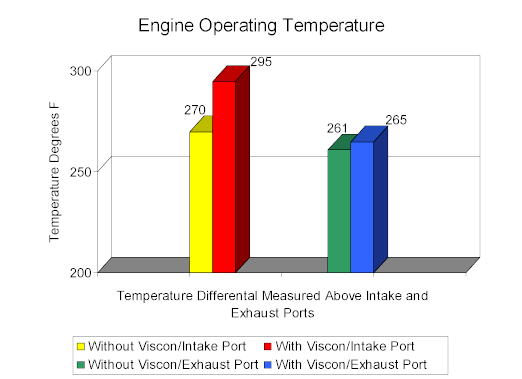Engine
Operation Temperature Test Program
GTAT hired
John Satterfield of Duchess Automotive Machine, Inc. to design
and construct a test to determine the effect of Viscon on
engine operating temperature.
Test Protocol
Tests were run on an 8 HP 4-cycle single cylinder Briggs
and Stratton engine. The engine was run at wide-open throttle.
Thermocouples were installed 1" from the exhaust port, at
the tailpipe, on the fins above the intake port and above the
exhaust port.
Test data is
set forth below.
Results:
1) The
average temperature 1" from the exhaust valve dropped 92F
when Viscon was used.
2) The average temperature at the tailpipe dropped 215F when
Viscon was used.
3) The temperature of the medal above the intake valve dropped
9F when Viscon was used.
4) The temperature of the medal above the exhaust valve
dropped 30F when Viscon was used.
5) The differential between the metal temperature above the
intake port and the exhaust port was reduced by 21F when
Viscon was used.
Conclusion:
1) Untreated
fuel burned last in the power stroke--possibly in the exhaust
stroke causing hot exhaust gas and a significant temperature
differential between the intake and exhaust ports.
2) When Viscon was added to the fuel completion of burn was
earlier.
3) Although there were no direct measurements of unburned gas
temperature in the cylinder, metal temperature above the
intake port indicates that the gas temperature in the cylinder
near the intake port is about 40F cooler with Viscon than with
neat fuel.



